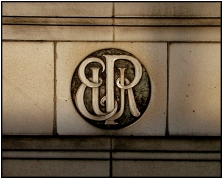A brief history of the Ipswich Underground
Railway
In 1920, the first post-war
Conservative Government proposed a network of
Underground Railways in British towns and cities,
to be operated locally but managed centrally from
Whitehall. Work went ahead on a number of pilot
projects, among them Ipswich, under the auspices
of the Eastern Underground Railway, a
semi-autonomous company set up by central
government.
The collosal cost of the
project soon became clear, and the Government,
now heading onto rocks under the failing command
of the ageing Prime Minister Bonar Law, decided
to abandon the project. Local authorities were
given the opportunity to take it over, and much
to the surprise of Whitehall, Ipswich accepted,
one of only three local authorities to do so.
The Eastern Underground
Railway became the Ipswich Underground Railway in
1922, and the Borough quicky set about expanding
the system to provide a clean, fast, safe and
rapid transport network underneath the Borough.
Celebrated local architect Hector Munro Cautley
designed several stations in a lively style that
crossed mock-Tudor with Art Deco. By 1930,
fifteen stations had been completed, mainly in
the south and east of the town. However, the
recession of the early Thirties called a halt to
this expansion.
The revival of the Ipswich
Underground was to occur in a quite remarkable
manner. In 1933, the newly-elected Ipswich
Borough Council consisted largely of Communist
sympathisers, and even a few party members. One
of its first acts was to send a message of
support to Joseph Stalin and the Central
Committee of the Communist Party of the Soviet
Union. Stalin was so pleased with this kick in
the face for Baldwin's government that he set
about funding the expansion and completion of the
Ipswich underground. A number of fabulous
stations were constructed, among them
Gainsborough, Margaret Catchpole and Fore Hamlet,
to the designs of the major Soviet architect
Vladimir Mayakovsky.
The Second World War put a
stop to this expansion, and the war itself took
its toll on the infrastructure of the system.
Bombing of the docklands area destroyed the main
tunnels linking the east side of town with the
town centre, and their replacement would have
been prohibitive. In 1950 it was decided to
abandon the system, and replace it with
overground trolley buses. One short stretch of
line connecting the Cornhill station with the
Ipswich mainline station, and the spur to St
Matthew's, remained in use until 1968, until they
were closed and filled in for the deep
foundations of the Greyfriars complex.
Some of the stations were
demolished, but others found new uses, as shops,
banks, a pub and even, in one case, a church. In
the Autumn of 2006 I decided to hunt down the
surviving evidence of the Ipswich Underground
system, and you can see some of my photographs
below - click on them to see them enlarged. I
hope to continue adding to this site, and offers
of original photographs, memorabilia, or even
just memories, are most welcome - you can contact
me here.
|

